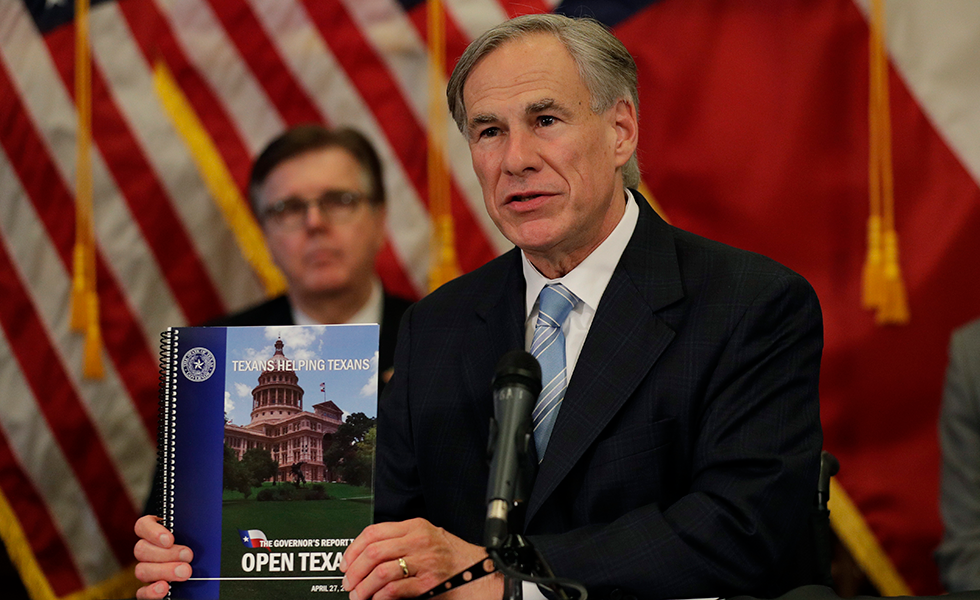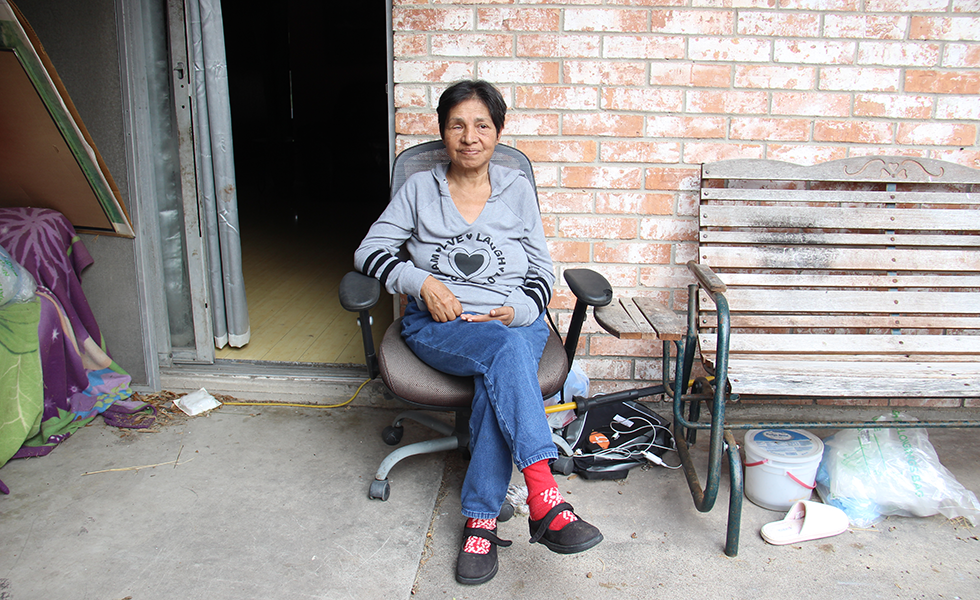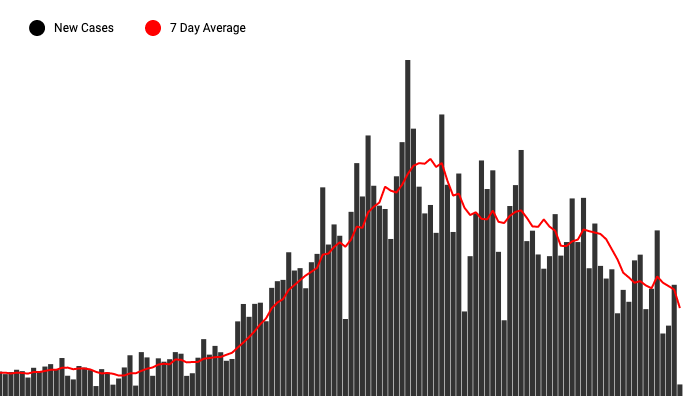Seeing a “disturbing” decrease in clients and callers amid COVID-19 stay-at-home orders, some domestic violence shelters in rural counties worry this is just the “calm before the storm.”

By Mary Tuma
May 19, 2020
The 24-Hour National Domestic Violence Hotline can be reached at 1-800-799-SAFE (7233). A list of support services and shelters through the Health and Human Services Commission can be found here.
Last year, the Noah Project of Abilene celebrated its 40th year as a trusted resource for victims of domestic and family violence across 10 largely rural counties in West Central Texas. Noah recently finished an expansion project that gave the shelter much needed growth, upping its capacity by about 30 percent, adding eight rooms and 24 beds. From 2013 to 2019, the shelter—the largest one between Dallas and El Paso—has seen a nearly 90 percent jump in clients.
When shelter-at-home orders went into effect in March, the Noah Project felt especially thankful for the extra building space, as it anticipated a rise in clients. Victims would now be forced to share close quarters with abusers to keep a deadly virus from spreading and could be facing added stressors —strained income, job loss, child care and homeschooling—and health anxiety, which when compounded can give way to potentially volatile abuse.
Home for many is not a safe space: In 2018, 174 women were killed by a male intimate partner across 64 Texas counties, the highest number of women killed in the past decade, according to the Texas Council on Family Violence (TCFV). Of those, 67 percent were killed at home.
The shelter prepared for the worst, stocking all rooms with disinfectant, face masks, hand soap, and more cleaning supplies. However, that anticipated surge never came. In fact, the rural shelter’s numbers fell sharply.
“I don’t think anyone here has ever seen our residential shelter numbers this low,” Jan Morrison, Noah Project’s development director, tells the Observer. “It’s a complete anomaly. The silence is worrisome because we know it’s not a reflection of what’s actually happening out there.”
While the shelter typically houses around 60 people a day, since COVID-19 swept through Texas, it’s averaged 15 clients daily—slicing the occupancy by three-fourths. The shelter experienced the same dramatic decline in hotline calls as well. “It’s very strange. This is not usually what it’s like around here,” says Morrison. “We are all very wary of the noticeable drop in clients. We feel like this is the calm before the storm.”
The Noah Project isn’t alone in reporting a significant and troubling decrease in domestic and family violence victims seeking services amid COVID-19 stay-at-home orders. Other rural shelters have also seen a similar trend, a contrast to what some, albeit not all, emergency centers in major metro areas like Houston, San Antonio, and Austin are experiencing. San Antonio Police reported an 18 percent increase in family violence calls in March compared with the same month last year, while Austin, despite a decline in overall arrests in March, saw domestic violence arrests up 17 percent compared with March 2019. Reports show that calls to the Houston Area Women’s Center spiked 40 percent since stay-at-home orders began, and calls to the Houston-based nonprofit Aid to Victims of Domestic Abuse also rose. The Center Against Family Violence of El Paso tells the Observer that it saw a roughly 25 percent uptick in callers and in-person clients following stay-at-home orders and is facing increased service costs to maintain demand. (While it served about 2,000 meals at the shelter in February, by March that figure had doubled, and by April it’d risen to more than 4,000.)
Unlike the shelters in El Paso and Houston, the Family Crisis Center of East Texas says the Lufkin-based organization expected its hotline to blow up when stay-at-home directives took effect—instead, there was an eerie quiet. The center, which serves nine rural counties, saw an alarming 60 percent decrease in shelter clients since COVID-19 orders. You can drive for miles and not get anywhere, says Glenna Harkness, the center’s program director, of the rural isolation in the East Texas area it serves. “It’s troubling because we know there’s a need,” she says. “Unfortunately, it looks like victims are afraid and anxious to leave and get help. They’re hunkering down and just enduring a lot right now.”
The Texas Council on Family Violence, a statewide coalition of more than 100 domestic violence organizations, is hearing the distinction in geographic areas from shelters across the state. While police and shelter operators generally report an increase in domestic violence in major cities, hotline calls and those obtaining services in rural areas appear to have diminished. “COVID-19 has highlighted the juxtaposition between how those in densely populated areas reach access to domestic violence services versus the challenges of how rural communities—where it’s already difficult in many ways, including traveling quite a distance in most cases—get those services,” says Gloria Terry, CEO of the TCFV.
Terry points out that relief through legal avenues is more complicated due to the pandemic. Court hearings to obtain protective orders are conducted over streaming video, which doesn’t seem “safe or private,” she says. The TCFV is currently working with the Office of Court Administration to advocate for more-confidential virtual hearings. Additionally, police, especially those with already limited resources in rural areas, are weighing misdemeanor arrests—the majority of domestic violence cases nationally and statewide—more carefully amid COVID-19, Terry says.
A number of other factors could contribute to the startling trend, advocates say. For one, stay-at-home orders exacerbate the isolation felt among rural residents, already distanced from the outside world far more so than their urban counterparts. They may find it more difficult to escape to a shelter due to travel time or being seen by others in the community. “It’s a lot more challenging to say, ‘I’m just going to the grocery store,’ and sneak out to find services in a small town when everyone knows who you are,” Terry says.
There’s also the inability to be discreet in their own homes, as victims may feel it’s too risky to call a shelter for help while trapped with abusers who may hear them. Some victims may be too fearful to find refuge at shelters due to COVID-19 health concerns, and abusers may use that to their advantage. And there’s a decrease in the likelihood another person would recognize signs of abuse and intervene to assist a victim, as personal contact is limited, especially in rural areas.
“What we know about domestic violence behaviors and strategies is that an abuser uses isolation as a core tactic in general, so under this state-imposed stay-at-home rule, the abuser has even more power to establish coercive control,” says Margaret Bassett, director of applied research and innovative instruction at the Institute on Domestic Violence and Sexual Assault at the University of Texas at Austin. “They can also use the threat of COVID-19 to instill fear in the partner, preventing them from leaving the house to get help.”
“In a rural setting you don’t have that same number of external people who are going to reach out to help victims access resources,” Bassett adds. “The threats by abusers are all amplified in this situation. They have more tools in their toolbox to try and control their partner.”
The Crisis Center of the Plains, which offers services to eight rural counties south of the Texas Panhandle, believes many of those factors are taking a heavy toll on survivors and victims struggling to escape abusive relationships. The center has seen a “disturbing significant downturn” in clients since mid-March. Its hotline callers decreased by nearly 80 percent, while clients at its safe house dipped by 70 percent. With many abusers now at home from work, it’s challenging for victims to get away and seek help, says Marci Brown, the center’s executive director.
“What we’re seeing right now really breaks my heart,” says Brown. “I’ve been in this field for four decades and I can only imagine what victims are going through, being stuck with and constantly watched by an abuser, too afraid to report or come to a shelter. The impact is going to be hard to measure in our community until the victims are able to make an outcry.”
Morrison, Harkness, and Brown all believe the chilling decrease in clients is not only temporary, but they anticipate a major surge in clients when workplaces begin to reopen in the weeks and months ahead, at which point victims are likely to have more opportunities to leave violent relationships. On Friday, Governor Greg Abbott announced that the Texas Health and Human Services Commission (HHSC) received more than $3 million as a part of the Coronavirus Aid, Relief, and Economic Security (CARES) Act to help victims of domestic violence. The funding will go toward the 78 family violence centers funded by HHSC.
Morrison, Harkness, and Brown said their shelters, while taking COVID-19 precautions, never shuttered amid the pandemic, and they hope victims and survivors know they can call or come to their emergency spaces.
“We want victims to know all of the shelters are still open to serve them,” says Brown. “If there’s any way they can reach out, to please reach out. We are here and want to help.”
The 24-Hour National Domestic Violence Hotline can be reached at 1-800-799-SAFE (7233). A list of support services and shelters through the Health and Human Services Commission can be found here.
Find all of our coronavirus coverage here.
Read more from the Observer:
How COVID-19 Upended Texas Prisons: While prison officials insist they’re doing their best in the face of an unprecedented crisis, Governor Greg Abbott has effectively ignored the pandemic inside the Texas prison system.
Texas Has Stopped Kicking Thousands of Kids Off Medicaid Each Month During the Pandemic, but Advocates Point to Delays for New Enrollees: Texas’ frequent eligibility checks for kids on Medicaid are on hold during the COVID-19 public health emergency.
‘The Pushback’ is an Expansive Look at the Texas Left’s Fight for Power: A new documentary on progressive politics in Texas is an ode to the growing pains of a changing state.



